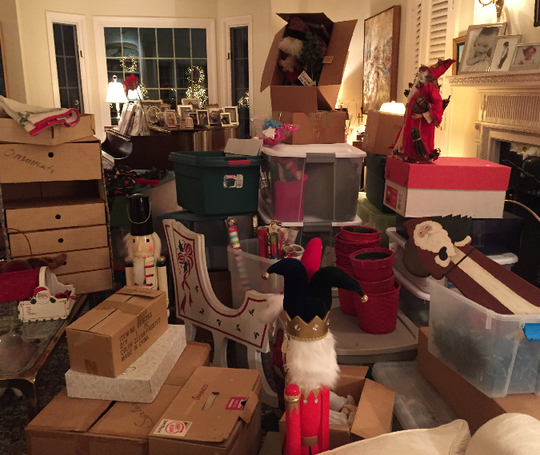“Hoarding” is a word that gets tossed about a lot when people begin to plan a move or transition, especially if they’ve lived in their current home for any length of time. We all accumulate stuff over time. Between the various stages of life and family, it’s not surprising that our attics, closets, and basements are bursting at the seams. But what is hoarding really, and why is it important to make the distinction?
Hoarding actually has two connotations.
As a clinical diagnosis, hoarding is a pathological or compulsive behavior defined by acquiring and cluttering that directly impacts an individual’s social or work life in a negative way; it impairs them and makes their living space no longer viable. (Source)
Hoarding in a colloquial sense is about accumulation of things beyond that which serves a purpose in our lives (but which we are reluctant to discard), or which we are preserving for future use.
In our work with clients, they often refer to themselves as “hoarders” when they have lived in their home for several decades, and in those instances they are using the non-clinical term. The distinction is important, because it means that we can address the clear-out and rightsizing without employing a clinical professional. Our approach is proactive, focused on purpose and enjoyment of each piece.
So, how do you go about helping a self-proclaimed “hoarder” sift through decades of memories? The answer is simple: Compassionately and methodically address the situation.
Whether we are looking at 20 boxes of photos or Christmas decorations, we set limits for our client on the amount to keep. Sitting with our client to help them identify and prioritize that which they are keeping, we refine 20 boxes into one or two.
Christmas decorations are a perfect example.

It’s time for us to take down our Christmas decorations and store them for 11 months until the holiday rolls around again. But, before you simply “put everything away,” ask yourself: Do I really love this? Did I use it? Did it bring me joy? And does it have a place in my home? If the answer is yes, then it’s time to lovingly store it. If the answer is no to any of those questions, then it might be time to let it go.
The partnership we provide our clients, keeping them focused on the task at hand, is what allows them to move forward deliberately as they assess and address their belongings in a meaningful way. The best part of this collaboration is the bond we create with our clients as they share their memories with us throughout the process.
Memories can be preserved, even if items are released. Emotions don’t reside in things, they reside inside our hearts. Once we’re able to assist our clients in letting go of the “things” they no longer need, we free them up to focus on the memories.
All my best,
Claudia